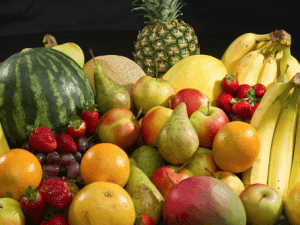Low fruit and vegetable intake among top 10 selected risk factors
 Low fruit and vegetable consumption is among the top 10 selected risk factors for global mortality.
Low fruit and vegetable consumption is among the top 10 selected risk factors for global mortality.
Dr Abebe Haile-Gabriel, FAO Representative to Ghana, speaking at the 2017 Promotion of Fruit and Vegetables for Health (PROVAF) workshop said for Ghana, low fruit and vegetable consumption prevalence ranges from 36.6 per cent for men and 38.0 per cent for women.
Dr Abebe said improved access to vegetables and fruits in diets reduces mortality and morbidity of infants and children under five years old, particularly in rural areas.
An estimated 5.2 million people die worldwide due to inadequate fruit and vegetable intake while insufficient intake of fruit and vegetables is estimated to cause around 14 per cent of gastrointestinal cancer deaths, about 11 per cent of heart disease deaths and about 9 per cent of stroke deaths.
The workshop was to create awareness about the FAO-WHO joint initiative on fruits and vegetable for health project and also map existing politics and current programmes and activities for the promotion of fruits and vegetables in Ghana.
It was also to present the findings of the survey and nutritional composition analysis done in four eco-zones in Ghana and to identify bottlenecks and opportunities for improving fruit and vegetable production and consumption at the National level.
He said Fruit and vegetable production provided a means of livelihood and employment generation for many Ghanaians and their families, and played an important role in the improvement of health.
“Overall, per capita consumption of vegetables and fruit falls far short of the daily recommended level of 400 grams,” he added.
Dr Abebe said the prioritization of vegetables in the recently launched “Planting for Food and jobs campaign” by Government was laudable.
Dr Owusu Afriyie Akoto, the Minister for Food and Agriculture, said the fruit and vegetable sector was important for the vitality of the Ghanaian economy.
He said Government has recently launched the “Planting for Food and Jobs Campaign” to increase the productivity and availability of major food staples and vegetables as well as create more jobs within the agriculture and related sectors
He said Horticultural crop production provided new and profitable sources of income for farmers and it could be especially important for small-scale farmers since these crops were well suited to smallholdings and family enterprises and were often adaptable to urban areas and small plot gardens
“Besides creating jobs on the farm, the horticultural sector also generates off-farm employment, especially for women,” he added.
He said aside the financial benefits of horticultural production, increasing women’s access to vegetables and fruits for themselves and their families would improve their health and work performance, thereby contributing to higher incomes.
Madam Makiko Taguichi, An Agriculture Officer, FAO Office in Rome said Fruits and vegetables were excellent sources of essential vitamins and minerals, fibre and vegetable protein.
She said a new challenge in diet- relating non-communicable diseases were heart disease, stroke, cancer, diabetes were no longer limited to affluent countries.
“80 per cent of premature deaths occur in middle and low income countries,” she added.
She said there was the need to increase public awareness about importance of fruit and vegetable consumption in healthy diets.
She said the risk of fruit and vegetable consumption actually dropping in quantity and diversity was real and needs to be understood and addressed.
Dr Francis Appiah, Lecturer at Kwame Nkrumah University of Science and Technology said public-private partnership was an important mechanism in the promotion of the production and utilization of fruit and vegetable.
He said lack of accessible land, ready market, inadequate capital and credit, high cost of inputs and pest and diseases were some of the constraints to vegetable production.
Source: GNA
